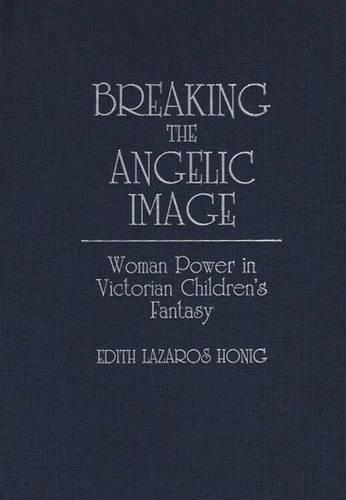
Breaking the Angelic Image: Woman Power in Victorian Children's Fantasy
(Hardback)
Publishing Details
Breaking the Angelic Image: Woman Power in Victorian Children's Fantasy
By (Author) Edith Lazaros Honig
Bloomsbury Publishing PLC
Praeger Publishers Inc
24th October 1988
United States
Classifications
Tertiary Education
Non Fiction
Literary studies: c 1800 to c 1900
823.809352042
Physical Properties
Hardback
156
Description
Honig's short, pleasantly written book is a consideration of the images of women--as mothers, spinsters, girls, and supernatural women--in 19th-and early 20th-century fantasy novels for children. . . . Honig sees fantasy as a means of freeing women from the Victorian social restraints--at first, imaginatively. Choice This is the first book-length study of nineteenth-century children's fantasy from a feminist viewpoint. Honig focuses on a number of major works that are representative of the best of their era--including such classics as Alice's Adventures in Wonderland by Lewis Caroll; The Golden Key, The Princess and the Goblin, and others by George MacDonald; the works of Mary Louisa Molesworth; Peter and Wendy by James Barrie; The Five Children and Itand The Enchanted Castle by Edith Nesbit. Through a close reading of these fantasies Honig demonstrates that although Victorian women were still being repressed in the home and the marketplace, the female figure in literature played a role that was quite different from the traditional stereotype of the meek, submissive wife and mother.
Reviews
Honig's short, pleasantly written book is a consideration of the images of women--as mothers, spinsters, girls, and supernatural women--in 19th-and early 20th-century fantasy novels for children. Although a number of books are mentioned, the main discussions are of Lewis Carroll's Alice's Adevntures in Wonderland (1865), six books by George MacDonald, five by Mary Louisa Molesworth, two by E. Nesbit, Ford Madox Ford's The Queen Who Flew (1894), and James Barrie's Peter and Wendy (1911). Honig sets up the "Angel in the House" image of the Victorian mother, suggesting this is one of the reasons she seldom figures in these fantasies--the child must be free of her in order to be allowed to mature. But Honig's basic concern is with how much freedom and power the female figures have. Carroll's Alice, for example, is not limited to being an angelic little girl--she expresses irritation, she interrupts others, etc. The most powerful female figure is the North Wind in MacDonald's At the Back of the North Wind (1871), since she Death. Honig sees fantasy as a means of freeing women from the Victorian social restraints-- at first, imaginatively. Appropriate for both Victorian and children's literature collections; readable enough for large public library collections.-Choice
"Honig's short, pleasantly written book is a consideration of the images of women--as mothers, spinsters, girls, and supernatural women--in 19th-and early 20th-century fantasy novels for children. Although a number of books are mentioned, the main discussions are of Lewis Carroll's Alice's Adevntures in Wonderland (1865), six books by George MacDonald, five by Mary Louisa Molesworth, two by E. Nesbit, Ford Madox Ford's The Queen Who Flew (1894), and James Barrie's Peter and Wendy (1911). Honig sets up the "Angel in the House" image of the Victorian mother, suggesting this is one of the reasons she seldom figures in these fantasies--the child must be free of her in order to be allowed to mature. But Honig's basic concern is with how much freedom and power the female figures have. Carroll's Alice, for example, is not limited to being an angelic little girl--she expresses irritation, she interrupts others, etc. The most powerful female figure is the North Wind in MacDonald's At the Back of the North Wind (1871), since she Death. Honig sees fantasy as a means of freeing women from the Victorian social restraints-- at first, imaginatively. Appropriate for both Victorian and children's literature collections; readable enough for large public library collections."-Choice
Author Bio
EDITH LAZAROS HONIG teaches English in New York City.
